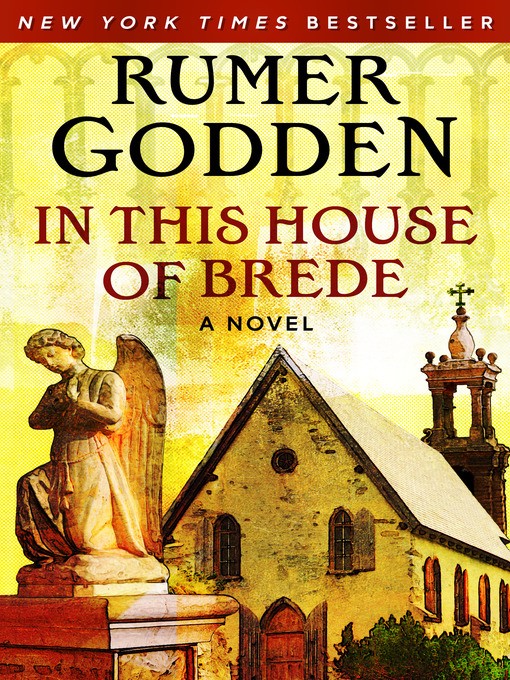The Dean’s Watch
 The Dean’s Watch is my second novel by Elizabeth Goudge. Its subject is the life of a community in a hilltop city (based on Ely) overlooking the fen country of England. The watch named in the title belongs to the dean of the town’s magnificent cathedral, and it is one of the first things we encounter in the story’s opening setting: a clock shop. The title suggests as well that the story’s main concern is what happens during his tenure or “watch” as dean. The balance between the affairs of linear time, and things of eternal value, is the source of some of the tale’s richest moments.
The Dean’s Watch is my second novel by Elizabeth Goudge. Its subject is the life of a community in a hilltop city (based on Ely) overlooking the fen country of England. The watch named in the title belongs to the dean of the town’s magnificent cathedral, and it is one of the first things we encounter in the story’s opening setting: a clock shop. The title suggests as well that the story’s main concern is what happens during his tenure or “watch” as dean. The balance between the affairs of linear time, and things of eternal value, is the source of some of the tale’s richest moments.
More leisurely than The Scent of Water, and with a more complicated tapestry of characters at all levels of the social scale, it prompted me more than once to compare it with a Dickens novel. Both Goudge and Dickens share a keen insight into personality, but unlike Dickens who indulges an often ruthless satire, Goudge writes with disinterested compassion not just for her favorites, but for the whole range of her characters. And where Dickens novels entertain fantastic twists and coincidences as their plots are shaped to serial form, The Dean’s Watch is anchored in the plausible. It’s also less sentimental than the Dickens tales that spring to mind.
The two authors’ treatments of Christian themes differ too. Dickens’ style of Christianity values social activism, and his satire is often designed to expose hypocrisy that blinds or paralyzes people who profess faith. But Goudge, though she too reveals the wounds and limitations that keep her characters from fully realizing their faith, writes compellingly of how they work to grow beyond their limitations.
(Now that I’ve written all this about Dickens, it strikes me that Trollope’s Barchester might make for a more promising comparison…)
I liked the juxtaposition of watches and clocks with the eternal as the characters learn the lasting art of loving. Present and past are juxtaposed as well: Adam, Isaac, Job, Abraham — Goudge’s biblical names are scattered everywhere and help to reinforce the perspective of human life as a ship sailing in a timeless sea. Some moments jump into a fuller life for the characters, moments when they feel the weight of significance and seem to feel everything more vividly, and we come to recognize these as moments when the veil is pulled aside.
The centrality of the cathedral itself, set atop the city and overlooking the affairs of men, is established early through the second chapter’s summary of its history. Its occasionally ominous darkness — in silhouette against the sky, or in its vast interior, which is so dark that the rood is a strongly felt presence never fully visible — becomes a way of characterizing the eternal and the mysterious.
Two of the story’s main characters, Dean Adam Ayscough and Miss Montague, see their prayer life in similar terms. The dean reflects,
There was of course that other thing, that power that had been given him of taking hold of an evil situation, wrestling with it, shaking it as a terrier shakes a rat until the evil fell out of it and fastened on himself. Then he carried the evil on his own shoulders to the place of prayer, carried it up a long hill in darkness, but willingly. Each time he felt himself alone, yet each time when the weight became too much for him it was shared, then lifted, as though he had never been alone.
Similarly, Mary Montague’s key decision in life, the decision to learn to pray, is represented as both an acceptance of darkness, and a willingness to bear others’ burdens:
She whose prayer until now had been the murmuring of soothing and much-loved words in the tired intervals between one thing and another, or the presentation to Almighty God of inventories of the needs of the city as she drove about it in her pony carriage, abandoned herself for the sake of those she loved to silence and dark, understanding however dimly that to draw some tiny fraction of the sin of the world into her own being with this darkness was to do away with it.
I ran across a similar idea of “substitutionary prayer” (?) in Charles Williams’ Descent Into Hell, and feel I have a glimmering of understanding of it — though not a deep one by any means. I love these passages that speak of prayer as something one does with God, rather than something one says to God.
I digress. But this is why I blog: to remember what strikes me the most in what I read. This quiet, thoughtful, insightful book moves slowly; at times, it functioned like a hand held up in resistance to quick or careless reading. Perhaps the slow pace afforded this tale its gentleness, because at times I found my eyes wet without being sure what was so moving to me. It seemed to soak in deeply without my knowing it.


